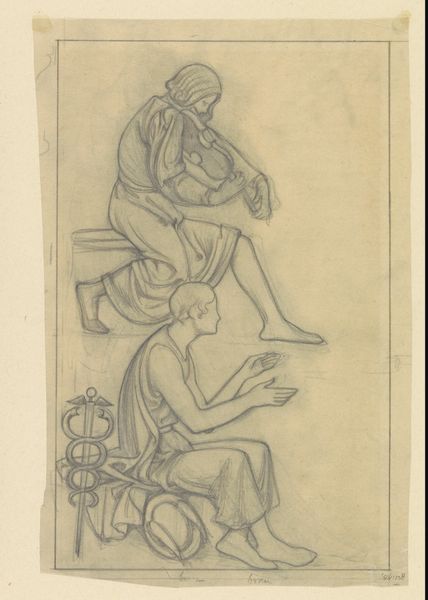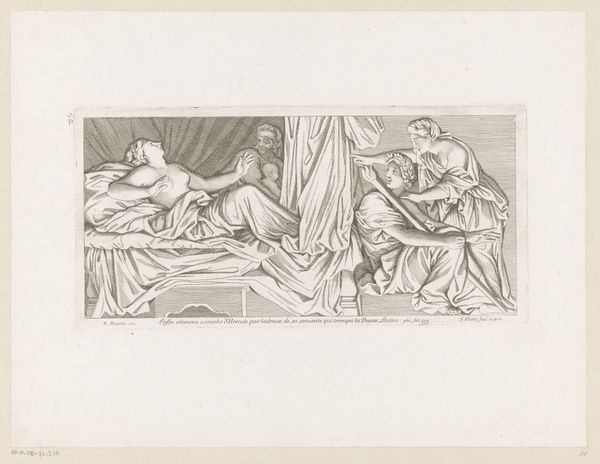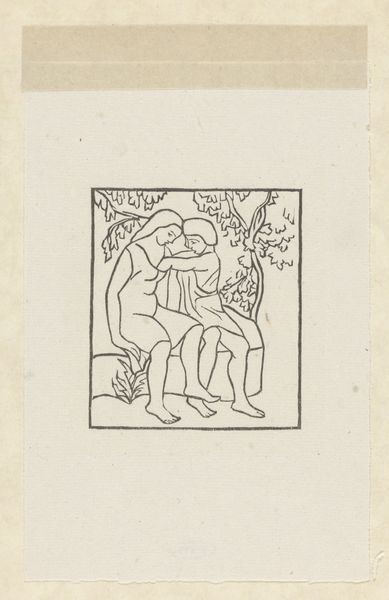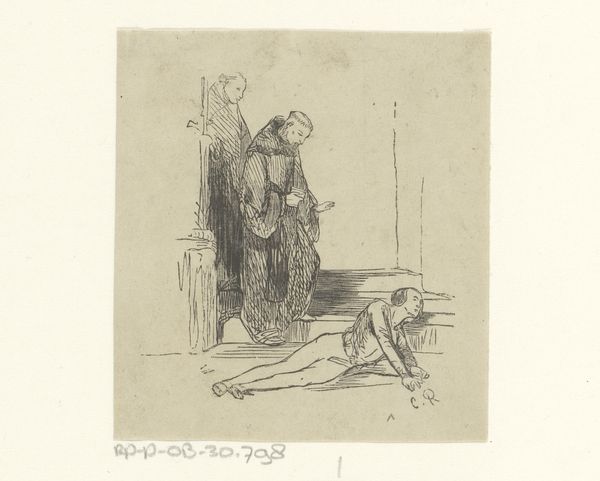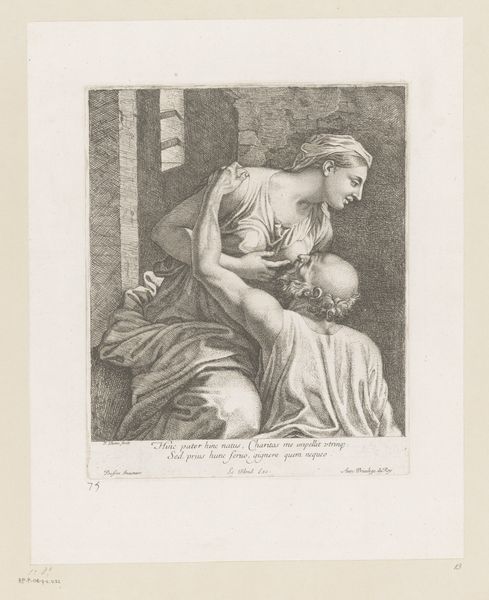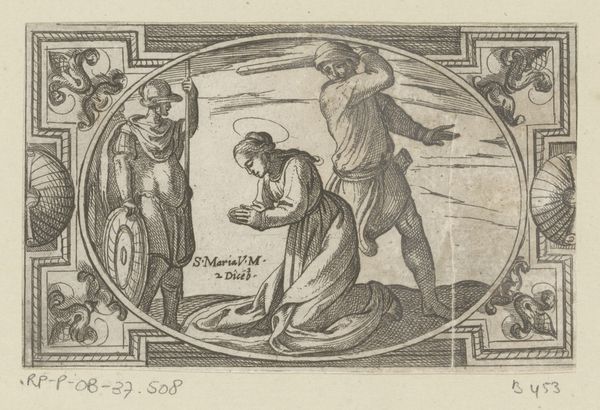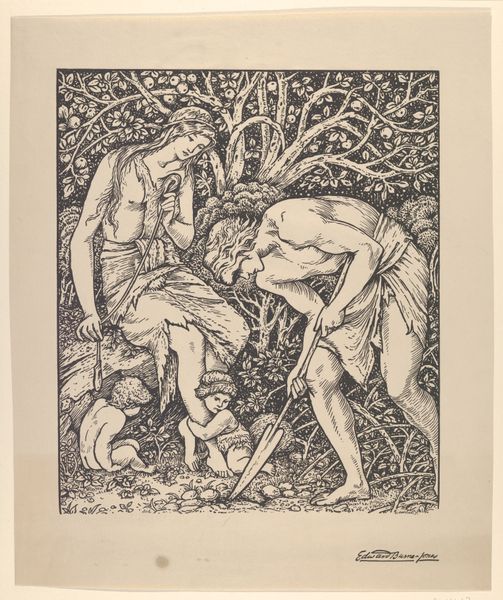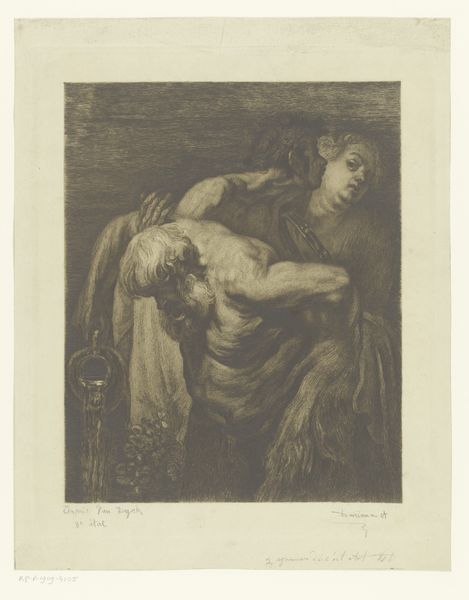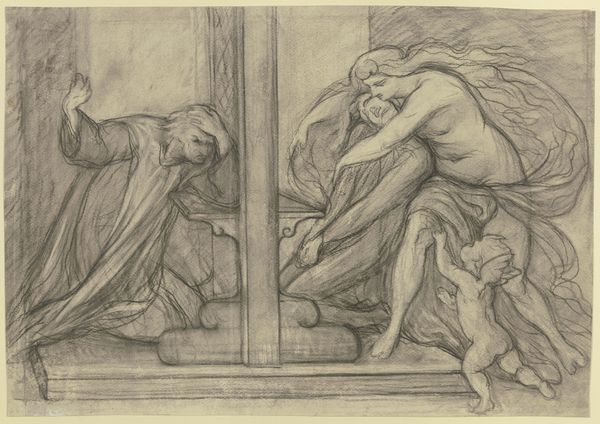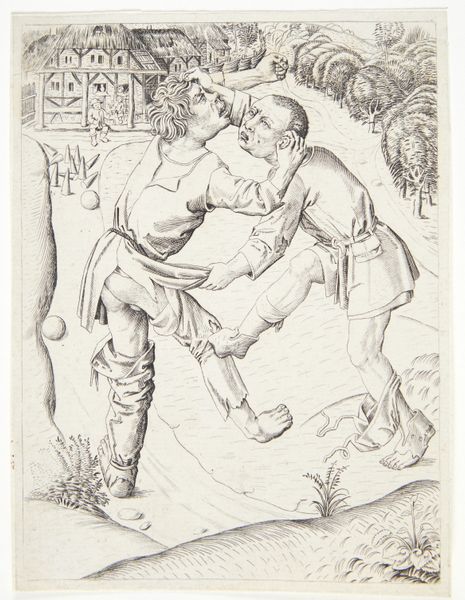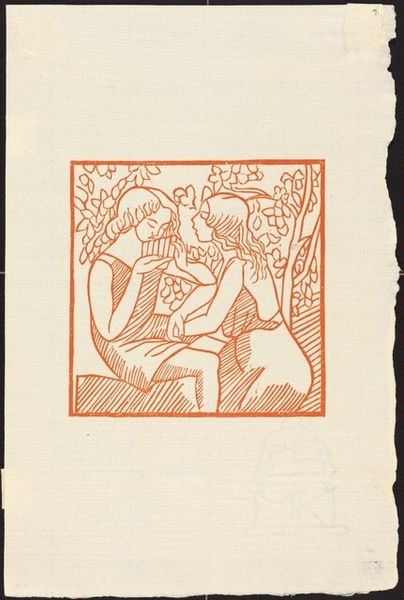
Ontwerp voor wandschildering in de Beurs van Berlage: embleem met knielend paar in omhelzing en spreuk van Vondel c. 1869 - 1925
0:00
0:00
Dimensions: height 228 mm, width 219 mm
Copyright: Rijks Museum: Open Domain
Curator: So here we have a drawing by Antoon Derkinderen, dating from around 1869 to 1925. It's called "Ontwerp voor wandschildering in de Beurs van Berlage: embleem met knielend paar in omhelzing en spreuk van Vondel"—quite a mouthful, isn't it? Essentially, it's a design for a wall painting in the Beurs van Berlage, featuring a kneeling couple embracing and a quote by Vondel. Editor: My immediate reaction is a sort of quiet intensity. The medium and rendering certainly lean into this—a lightness of pencil on toned paper creating almost ghostly, intimate figuration. There's such vulnerability. Curator: Exactly! It’s remarkable how much emotion he conveys with so few lines. The embrace is so tender. It reminds me of those old testament scenes of reconciliation, like Jacob and Esau. Editor: I find it so interesting to think of this as preparation. In particular, observe how the implied geometry impacts the emotive figuration. The sketch isn't simply documenting a scene; it is defining the scene. Curator: And consider the context—the Beurs van Berlage, a symbol of Dutch trade and civic pride. Derkinderen, known for his romanticism, infuses this design with a deep sense of human connection, perhaps suggesting that true prosperity comes from unity and love, something of course indicated more overtly through the embedded aphorism. Editor: Yes, I am struck by the text itself. It provides a visual structure to what would be, by itself, only figures expressing the condition of vulnerability—it is this contrast between geometry and chaos where true visual and semiotic meaning originates. Curator: It's a fascinating contrast, the architectural precision around the figures with their raw emotion. Knowing it was destined for the Beurs, this preliminary sketch is just a beautiful testament to the humanity that great structures intend to capture. A building that literally embodies financial structure, softened with an ethos of the most base and sincere, human form of interaction. Editor: For me, this simple sketch underscores how fundamental preparatory work can be. How, often, even it is the site of not only construction, but an important locus for critical creativity. Curator: A tiny portal of raw emotion preceding monumental architecture!
Comments
No comments
Be the first to comment and join the conversation on the ultimate creative platform.
